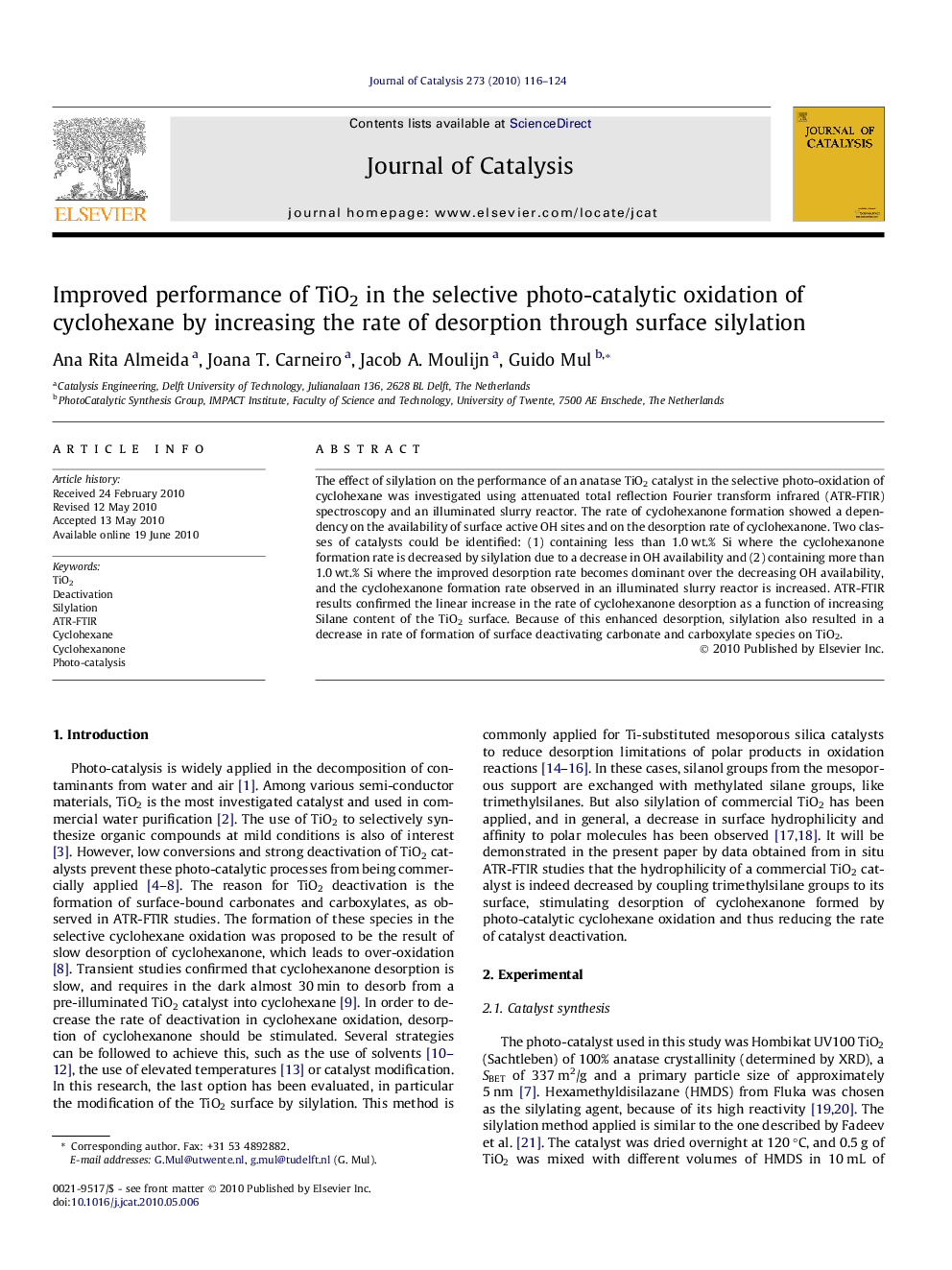| Article ID | Journal | Published Year | Pages | File Type |
|---|---|---|---|---|
| 62075 | Journal of Catalysis | 2010 | 9 Pages |
The effect of silylation on the performance of an anatase TiO2 catalyst in the selective photo-oxidation of cyclohexane was investigated using attenuated total reflection Fourier transform infrared (ATR-FTIR) spectroscopy and an illuminated slurry reactor. The rate of cyclohexanone formation showed a dependency on the availability of surface active OH sites and on the desorption rate of cyclohexanone. Two classes of catalysts could be identified: (1) containing less than 1.0 wt.% Si where the cyclohexanone formation rate is decreased by silylation due to a decrease in OH availability and (2) containing more than 1.0 wt.% Si where the improved desorption rate becomes dominant over the decreasing OH availability, and the cyclohexanone formation rate observed in an illuminated slurry reactor is increased. ATR-FTIR results confirmed the linear increase in the rate of cyclohexanone desorption as a function of increasing Silane content of the TiO2 surface. Because of this enhanced desorption, silylation also resulted in a decrease in rate of formation of surface deactivating carbonate and carboxylate species on TiO2.
Graphical abstractPhoto-oxidation of cyclohexane over TiO2 yields surface adsorbed Cyclohexanone. Desorption of this product is increased by silylation of the TiO2 surface, reducing the rate of catalyst deactivation.Figure optionsDownload full-size imageDownload high-quality image (37 K)Download as PowerPoint slide
